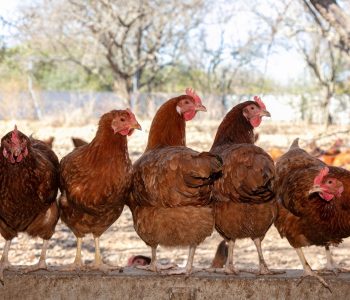Laying hens’ nutrition has critical points that require a great deal of attention in order to obtain the best possible yields from these productive systems. Current laying hens have very high genetic potential for egg production. They can maintain yields of over 90% of posture for a great part of their production cycle if given adequate environmental, health and nutritional conditions.
Genetic advances in the last decade have given way to laying hens that possess extraordinary and sustained productive capacity. Paired with a slight reduction in body weight, feed consumption and egg size. Having the ability to reach 50% production earlier than 10 years ago.
Modern hens, a challenge for nutritionists
Modern hens represent a challenge for nutritionists, as one can no longer rely entirely on scientific information generated in the past based on different types of birds.
The importance of achieving weight in rearing
| One of the main problems in birds that are reaching their production peak and are not able to consume enough food, is that they end up having to resort to their body fat and bone structure to compensate for this lack of nutrients. Resulting in a production decrease that will impact the performance of the bird during the rest of its productive lifespan if its reserves are not adequate and / or the demand is high. |
Therefore, it is necessary to prepare layers so they can begin posture with appropriate size and weight,
To interrelate the parameters mentioned above, it is necessary that rearing diets stimulate the increase in the size of the digestive tract. Increasing fiber levels and using feeds with 1.0 to 1.2 mm granulometry from the fifth week of age.
Bone formation
For appropriate bone formation, the inclusion of calcium, phosphorus and vitamin D3 during growth is crucial. Maintaining a proper ratio between available calcium, and phosphorus, as well as providing adequate levels of these minerals during the pre-posture phase for a correct medullary bone formation.
Medullary bone formation begins around 10 days before posture. The bird’s skeleton increases by 20% due to a hormonal synergism of estrogens and androgens which indirectly increase the absorption and retention of calcium and phosphorus.
Egg formation scheme
Calcium
Particle size of the calcium source is one of the most important parameters for maintaining good shell quality.
Figure 1. Calcium homeostasis (modified from Soares 1984))
Phosphorus levels
The dietary level of phosphorus available is also important in the quality of the shell. During the growth of the bird an appropriate level and ratio of available calcium and phosphorus are necessary for optimal bone calcification and bone formation.
Therefore, it is necessary to limit the phosphorus level available in the diet, especially after 60 weeks of age in order to improve shell quality.
Vitamin D3
The presence of adequate vitamin D3 levels in the diet is essential for a good calcification of the bones and shell.
Vitamin D3 metabolites are currently available for their use. Contributing to increase calcium retention and oftenly helping to reduce mortality.
Zinc, manganese and copper
It is important that the diet also contains adequate levels of zinc, manganese and copper. These minerals participate in the formation of membranes or internal cuticules of the eggshell. As well as contributing to the formation of the shell’s organic matrix.
Caloric stress and shell quality
When hens are under caloric stress, continuous panting generates a drop in carbonate levels within the blood. Leading to subsequent deterioration of shell quality due to lack of carbonate.
Selection of feed by the hens
Hens in posture require a minimum daily intake of metabolizable energy of 280 to 300 kcal/kg with a balanced intake of digestible amino acids, mineral, and vitamins to ensure adequate egg production and size.
When the hen is in production, it has the ability to select different components of the diet during the day.
Traditionally, protein levels equal to or greater than 17% have been used in laying hens’ diets . However, the current trend is to formulate based on the requirements of indispensable digestible amino acids.
|
It is important to mention that laying hens do not have a crude protein requirement as such. They only need an amount that ensures a sufficient nitrogen reserve for the synthesis of dispensable amino acids. |
During the last decade, a considerable number of studies have been carried out to determine the daily amino acid needs in laying hens. Therefore, formulating based on the requirements of indispensable digestible amino acids is a proven practice. Layers fed a diet of 13 to 14% protein, adequately supplemented with pure amino acids (methionine, lysine, tryptophan, arginine, threonine, valine and isoleucine) have been shown to perform optimally, similar to those fed a control diet containing 16% or 18% protein.
It is essential to have accurate and reliable values of digestible amino acids within the ingredients in order to achieve this type of results.
The amount of information that has been generated regarding the digestibility of amino acids in raw materials and their required levels, allows a more precise formulation of laying hen diets. Table 1 shows the updated range of suggested daily intake levels of digestible amino acids for laying hens.
Table 1. Suggested ratio of digestible amino acids for laying hens.
CONCLUSION
Adapting nutritional programs to the requirements of new genetic strains of laying hens is a great challenge. Due to the fact that they are very efficient birds with great egg production capacity which also makes them more sensitive to any nutritional alteration. In any case, the development of these new nutritional programs should always consider the most favorable measures which contribute to obtain the best financial returns for the producer.
